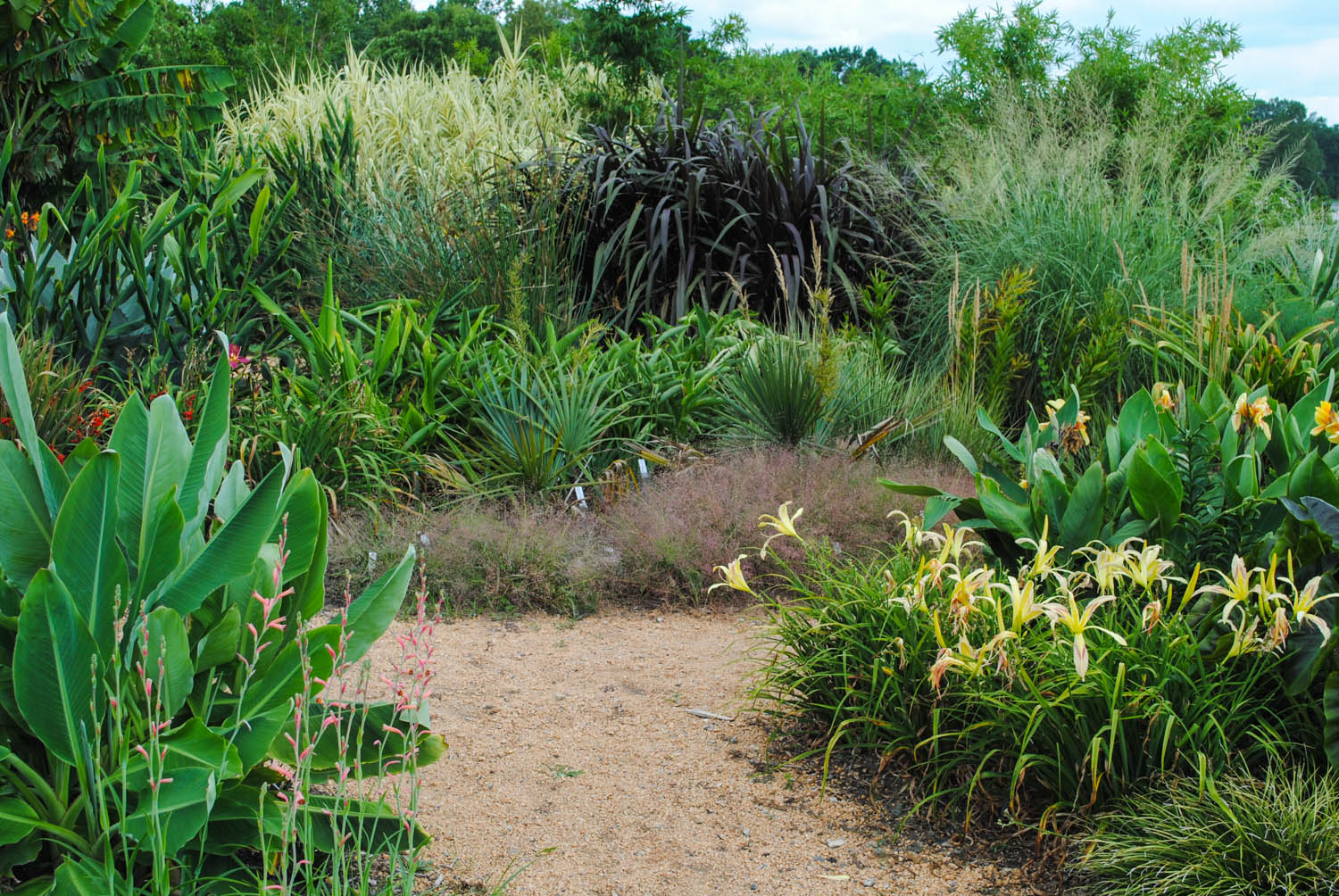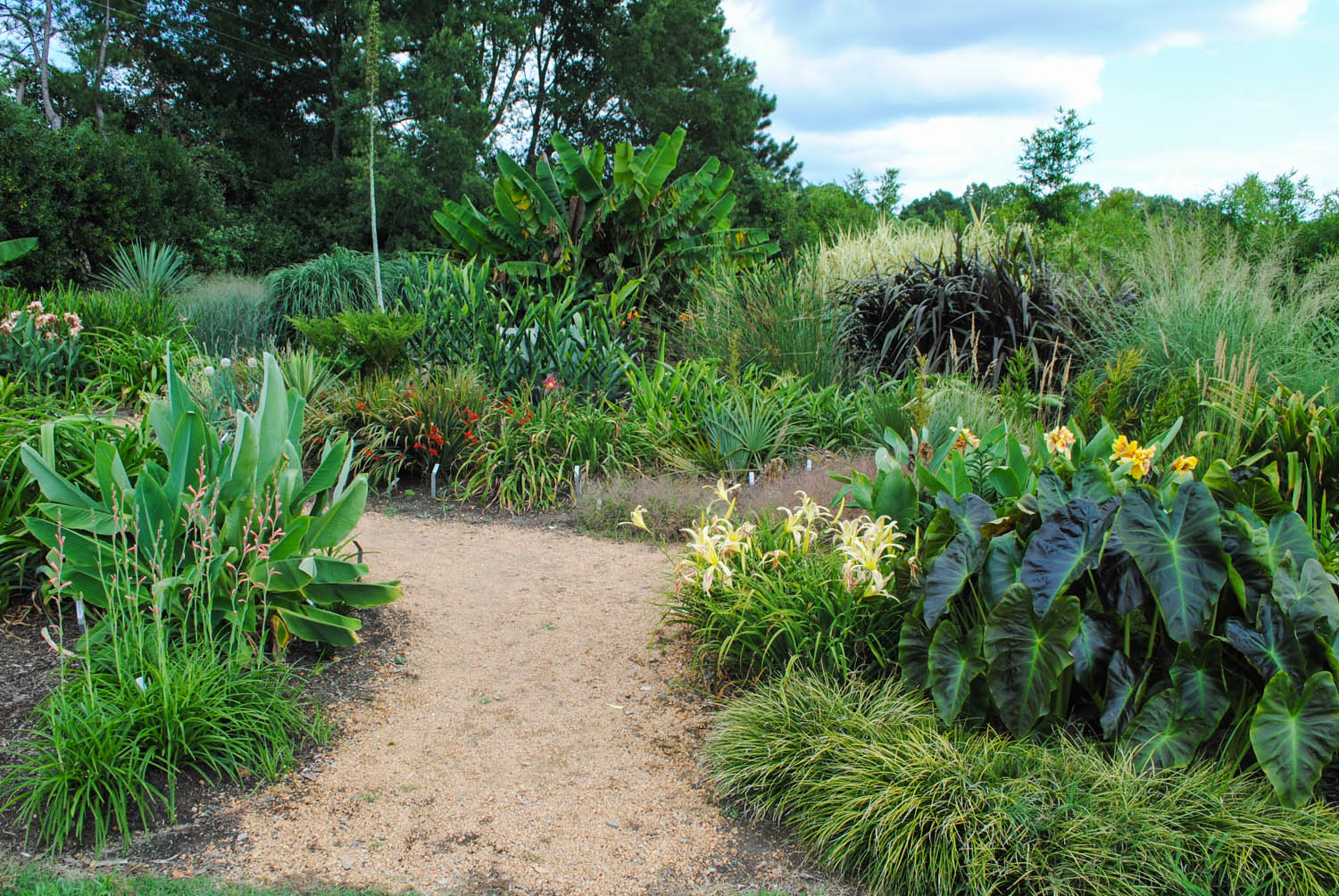The monocot garden at the JC Raulston Arboretum looked spectacular during my recent visit to Raleigh. It was in its youth when I left grad school in late 2013, and I haven’t seen it mature and at the height of summer since. The garden focuses on the evolutionary branch of plants that share a few characteristics, most notably the one (mono-) seed leaf (-cotyledon) on the seedling that gives rise to the name monocotyledon or monocot for short.
The texture of the garden was very palatable and created a vibrant energy, perhaps because of the tropical feel. The more I thought about it, monocots have some plants with the largest foliage (think bananas, palms, and agaves) and the thinnest leaves (think grasses, sedges, and rushes) for our gardens. Thus, by just pairing plants based on their lineage can create grand textural differences.
The monocot garden at the JC Raulston Arboretum was rich with texture and color in mid-July.
As a quick texture check, I use a trick I learned in one of Tracy Disabato-Aust lectures years ago, and I now teach to my students. Make a photo black and white and see if it still looks engaging with differences between bold and soft or coarse and airy. With the color removed, you notice aspects that weren’t there a minute ago.
Tim Alderton, the research technician at the JC Raulston Arboretum, caught up with me right as I was wrapping up my walk through the beds, and he commented that because this garden way back in the corner of the arboretum, many visitors don’t see it. But, I did, and I encourage you to seek it out the next time you’re there, too. Or, just check out the photos below if it’s too far!
Polianthes x bundrantii. I’m such a sucker for Polianthes, and I forget there’s incredible color diversity in this genus.
Canna ‘Thai One On’ looking pretty in pink.
I <3 Eragrostis, as you should since the name translates as love grass. I’ve waxed on about it before. This form was a bit shorter than the wild ones I’ve collected.
Agave ovatifolia ‘Frosty Blue’ has such bold texture for the landscape.
One last look on this great garden.






